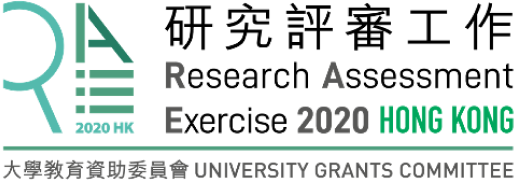Unit of Assessment:
Research categories:
?Materials Science
Materials Science, Multidisciplinary (2)
Nanoscience & Nanotechnology (1)
Impact locations:
?Asia
China (Mainland China) (5), Shenzhen (1), Japan (1)
North America
United States (1)
Case Study
Optimizing devices performance through defect engineering
1. Summary of the impact
The PI collaborates with companies in Greater China to develop technologies in quantum dot (QD) display used in TVs to suppress aging during the thermal curing process and non-emitting recombination on the QD surface; and to reduce the leakage current of silicon carbide (SiC) power devices used in electric vehicles. This is achieved via identifying and controlling atomic scale defects that deteriorate the electrical and optical performance. The collaborations have yielded improvements in QD light emitting devices, one of the smallest SiC chips in the world, reducing production cost, and acquiring new markets for the company.
2. Underpinning research
Defects in semiconductors play a crucial role in determining their electrical and optical properties. Since 2000, Ling has been working in the fundamental research of defects, including: (i) defect characterization and control in SiC material and devices [1-4]; and (ii) optimization of material and devices via surface/interface defect state deactivation (`passivation') by hydrogen peroxide treatment and rapid remote plasma annealing in hydrogen [5-6]. In the period of assessment, Ling was involved in two commercial exploitations of his research, namely QD display and SiC power devices.
(i) QD Display
This project is undertaken together with Prof. Shichun Su (South China Normal University) and the Chinese industrial collaborator Tyanshine Photoelectric. The research was initiated by a grant of RMB1 million under the Technology and Innovation Committee of China (2016-2018). In 2018, with investment from Tyanshine, Su set up a company in Shenzhen (Shi Jia Semiconductor Technology Ltd) to further develop the products, while also collaborating with Ling. QD display is an existing display technology that delivers the highest brightness and widest gamut. Photoemission properties of QD is determined by the QD size and its surface/interface defect states. Ling advanced the technology through optimizing the optical properties of the CdSe/ZnO core-shell QD by: (a) Passivating the non-emitting surface defect states by remote hydrogen plasma treatment [5-6]; (b) Developing the novel two-step curing method of the CdSe/ZnO core shell QDs by ultraviolet (UV) and thermal curing. Red light emitting QDs (RLQD) are firstly deposited onto the blue GaN LED chip and encapsulated by thermal curing, followed by encapsulation of the green light QDs (GLQDs) by UV curing. The UV curing improves the stability of green light QDs (GLQDs), and reduces the QD agglomeration and detachment of surface ligand. Problems of aging and reduction of luminosity caused by thermal curing is reduced by surface defect passivation and the introduction of metal nanoparticles on the GLQD surface.
(ii) SiC Power Devices
SiC devices are now emerging as a promising power device for electric vehicles and power inverter application. Ling was invited to be the Advisor of the Alpha Power Solutions (APS) Ltd, which is a Hong Kong based company that focuses on SiC power devices.
APS is funded by the Hong Kong Innovation and Technology Fund Enterprise Support Fund (ITC-ESS) with an amount of HKD20 million to perform SiC devices research. Ling, together with his PhD student with studentship, and fully supported by APS, were involved in the project starting from 2017. We found that the atomic scale vacancy defect is created in the Al-ion implantation process for p-type doping. Furthermore the vacancy cannot be annealed out simply using hightemperature annealing (1800 °C). The vacancy leads to a large defect-assisted leakage current, which dissipates energy and hinders device performance. A recipe of multi-step annealing in a carbon-rich environment was invented to remove the vacancy, leading to a new SiC technology capable of reducing chip size and production cost.
3. References to the research
[1] `Isochronal annealing studies of n-type 6H-SiC with the use of positron lifetime spectroscopy', C. C. Ling, C. D. Beling and S. Fung, Phys. Rev. B 62, 8016 (2000).
[2] `Current transport property of n-GaN/n-6H-SiC heterojunction: influence of interface states', Y. Huang, X. D. Chen, S. Fung, C. D. Beling, C. C. Ling, X. Q. Dai and M. H. Xie, Appl. Phys. Lett. 86, 122102 (2005).
[3] `Low energy electron irradiation induced deep level defects in 6H-SiC: The implication for the microstructure of the deep levels EI/E2', X. D. Chen, C. L. Yang, M. Gong, W. K. Ge, S. Fung, C. D. Beling, J. N. Wang, M. K. Lui and C. C. Ling, Phys. Rev. Lett. 92, 125504 (2004).
[4] `Isochronal annealing study of low energy electron irradiated Al-doped p-type 6H silicon carbide with deep level transient spectroscopy', J. M. Luo, Z. Q. Zhong, M. Gong, S. Fung, and C. C. Ling, J. Appl. Phys. 105, 063711 (2009).
[5] `Hydrogen peroxide treatment induced rectifying behaviour of Au/n-ZnO contact', Q. L. Gu, C. C. Ling, X. D. Chen, C. K. Cheng, A. M. C. Ng, C. D. Beling, S. Fung, A. B. Djurišić, L. W. Lu, G. Brauer and H. C. Ong, Appl. Phys. Lett. 90, 122101, (2007).
[6] `Highly luminescent MgZnO/ZnO multiple quantum wells for photonic devices', M. Zakrita, T. T. Huynh, F. C. C. Ling, S. C. Su, M. R. Philips and C. Ton-That, ACS Appl. Nano. Mater. 2, 2574 (2019).
4. Details of the impact
(i) QD Display
Perspective. A QD display delivers a colour range that is closest to what can be achieved with human eyes, compared to other available technologies [link]. QD technology increases the colour gamut by 40-50% and is now the only technology in the proximity of achieving the BT2020 standard. QD technology does not need major change to the conventional liquid crystal display (LCD) TV manufacturing process and thus does not affect the supply chain and corresponding costs. This is much more cost effective than other high colour gamut OLED technology. QD based displays are expected to approach 100 million units by 2021 from the current 4 million units [link], and with the market expected to grow from USD1.09 billion in 2017 to USD3.97 billion in 2023 [link]. China is capable of manufacturing large quantities of electronic displays, but are mostly in the low-end market. QD display technologies and related patents are largely monopolized by international manufacturers such as Sony, Samsung, LG Electronics, and Toshiba; our work challenges these monopolies.
Technological Impact. To realize the QD white light emitting diode (LED), the surface defect states of RL and GL CdSe/ZnO core shell QDs are passivated to optimize photoemission. Multi-layer sensitized TADF QD white LED, new methods of two-step curing, and air-tight packaging of onchip QD white LED were invented. Two patents were filed with the National Intellectual Property Administration, PRC in 2017 [1,2]. The QD white LED was sent to the China National Accreditation Service for Conformity Assessment (CNAS) for accreditation, as according to the standards of the International Laboratory Accreditation Cooperation (ILAC) and CNAS [3]. The emission of GL and RL are precise (full width half maximum of ~32 nm for the green and red emission peaks). The QD white LED has a colour gamut area of 109.71% of the NTSC standard gamut area, surpassing the NTSC standard gamut area.
Economic Impact. The joint research study between HKU, South China Normal University, and Tyanshine Photoelectric was funded by a grant of RMB 1 million under the Technology and Innovation Committee of China [4]. The industry collaborator, Tyanshine Photoelectric, is a Chinese optoelectronic company that employs more than 200 personnel. The MOU with Tyanshine is attached as [5].
With investment from Tyanshine, Su set up a company called Shi Jia Semiconductor Technology Ltd in Shenzhen to further develop the commercial QD LED backlight module for TVs. Shi Jia invested RMB1.2 million, recruited four staff for the project, and collaborated with Ling in January 2018 (see letter from Shi Jia [6]).
(ii) SiC Devices
Perspective. SiC devices are now emerging as a promising technology for electric vehicles (EV). Capable of working at higher temperature and operating voltage, SiC devices have advantages over Si in miniaturization, high power density, and energy efficiency. The SiC power semiconductor market is expected to increase from USD400 million in 2018 to over USD300 billion by 2025 [link]. The Tesla Model-3 is the first commercial vehicle to use full SiC device solutions, while all other EV makers are also working along the same direction [link]. Nevertheless, the main players of SiC devices reside in the US and Japan (such as ST Microelectronics and Mitsubishi Electric) and the SiC industry of Greater China is still at an early stage. The industry collaborator APS is the first company in Greater China to use 150 mm SiC technologies to produce the first working SiC diode and also the first company in Greater China to obtain both JEDES and AES-Q101 product qualifications on the diode products.
Technological Impact. As spelled out in the Letter of Appreciation [7], the collaboration between Ling and APS lead to the impacts of:
- `...we are able to come up a new SiC diode technology that helps us to reduce the chip size of our latest 1200V 20A SiC diode design to become one of the smallest chips in the world.'
- `...With the SiC diode implementation into power modules, the energy loss at high temperature operation reduces and improves power efficiency.'
Economic Impact. The collaboration between Ling and APS is mainly funded by the HKD20 million grant awarded by ITC-ESS. A PhD candidate supervised by Ling fully funded by APS is involved in this project. After graduating with a PhD, he is now working as a research engineer in APS. Moreover, as spelled out in the Letter of Appreciation:
- `As such our cost is reduced by 30%.'
- `This product platform has now won a few contracts for the rapid growing SiC application in the DC EV quick charger.'
5. Sources to corroborate the impact
[1] `TADF 材料敏化的多层结构量子点发光二极管及其制法’,中华人民共和国国家知识产权 局发明专利申请受理 (No. 201710861996.9), 章勇 眼颖楠 刘显昆 宿世臣 凌志聪 `TADF-sensitized multi-layer quantum dot LED and its fabrication', patent filed at the National Intellectual Property Administration, P. R. China on 21-9-2017 (No. 201710861996.9).
Chinese document with English translation attached.
[2] '量子点 On-chip白光 LED的二次气密性封装方法’,中华人民共和国国家知识产权局发 明专利申请受理 (No. 201710861916.X), 章勇,蓝栩砚 杨欣 凌志聪 宿世臣, 21-9-2017.
`The air-tight packaging method of quantum dot on-chip white light LED', patent filed at the National Intellectual Property Administration, P. R. China on 21-9-2017 (No. 201710861916.X).
Chinese document with English translation attached.
[3] The report of the QD white LED sent to the China National Accreditation Service for
Conformity Assessment (CNAS) for accreditation.
Chinese document with English translation attached.
[4] Technology and industrialization of quantum dot based high colour gamut LED backlight module packaging (基于量子点的高色域LED背光模组封装关键技术及产业化研究)
Knowledge Exchange and Innovation Project, Technology and Innovation Committee, Guangzhou (产学研协同创新重大专项,广州市科技创新委员会)
Amount: RMB 1,000,000, awarded in April 2016.
P.I.: Su Shichen, Institute of Optoelectronic Material and Technology, South China Normal University (宿世臣,华南师范光电子材料与技术研究所) Co.I.:F.C.C. Ling, Department of Physics, The University of Hong Kong; 张伟,广州市添鑫光电有限公司
Chinese document with English translation attached.
[5] The Memorandum of Understanding between HKU and Tyanshine the industry collaborator. The document is attached.
Chinese document with English translation attached.
[6] A letter from Shi Jia Semiconductor Technology Ltd for the research collaboration with Ling. The document is attached.
Chinese document with English translation attached.
[7] Letter of Appreciation from Alpha Power Solutions Ltd.

